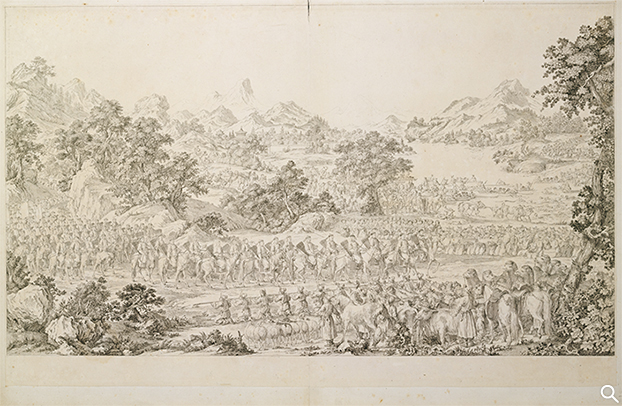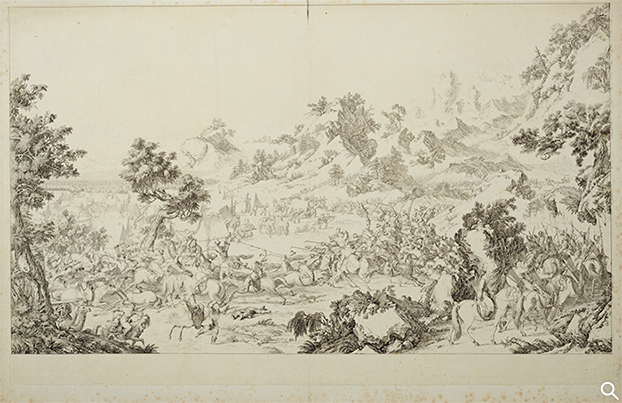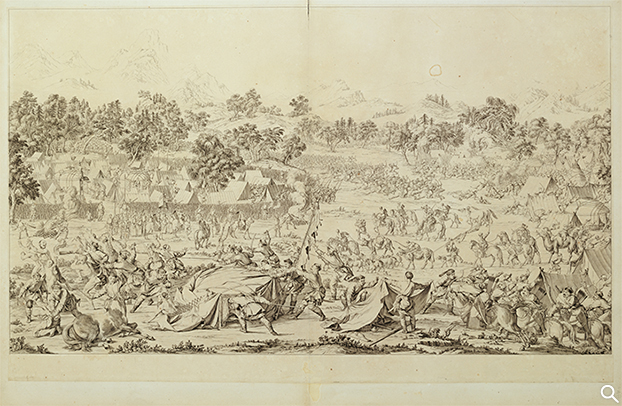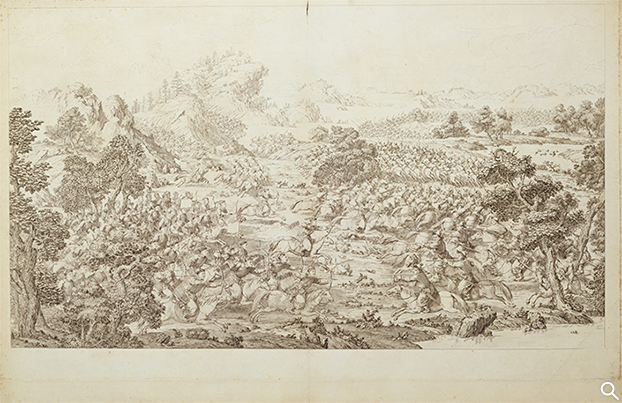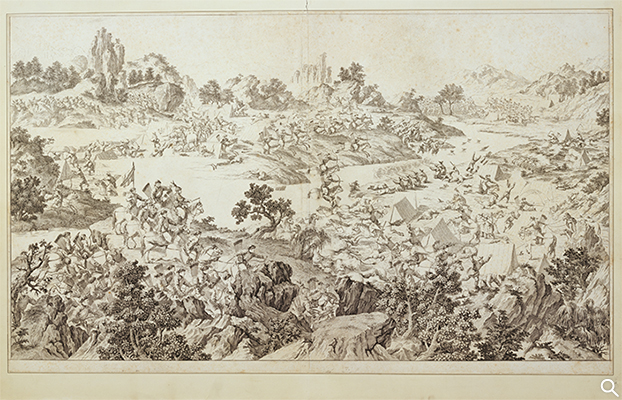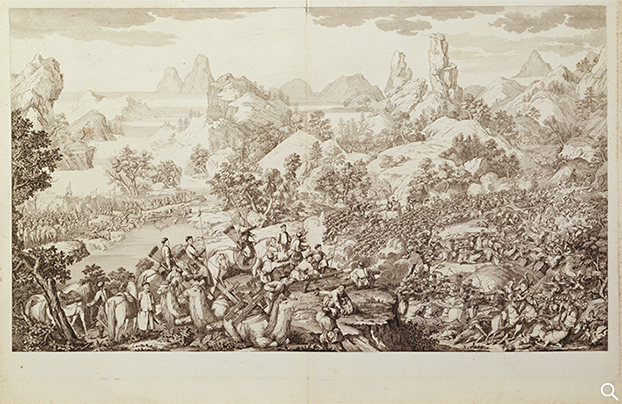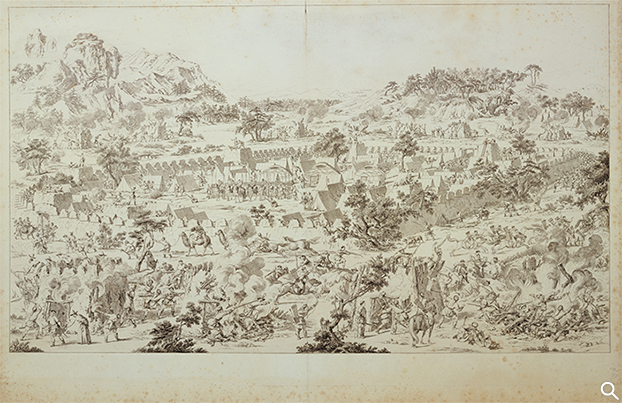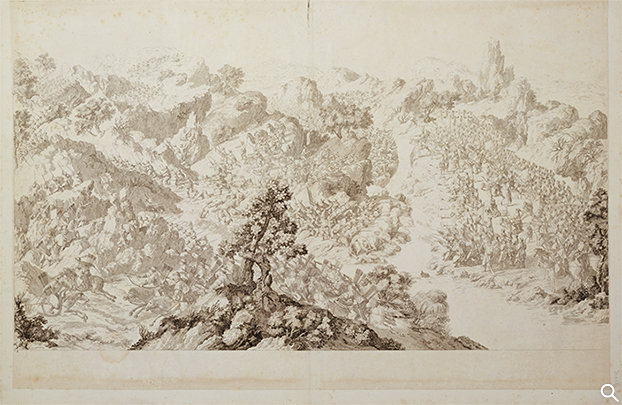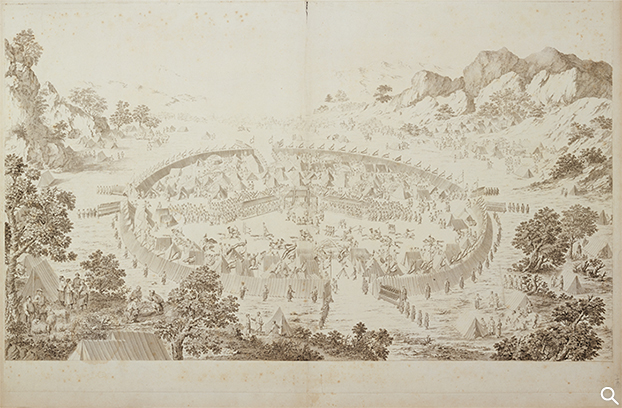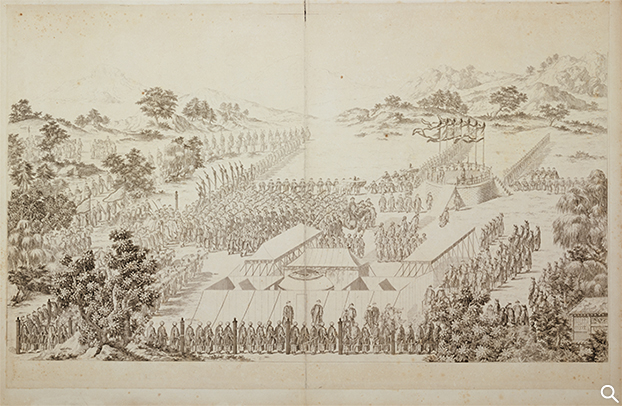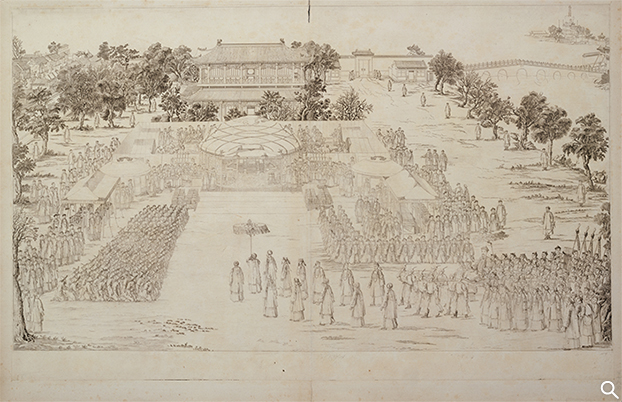Sketch drawn by Giuseppe Castiglione
Directed by Charles-Nicolas Cochin
Engraved by Jacques Philippe Le Bas
Printed in Paris, 1769.
61.8 cm × 93.2 cm
The National Palace Museum is home to thirteen galley proofs of the copperplate engravings of Victory in the Pacification of Dzungars and Muslims made during Qianlong reign. They are considered uncorrected and unfinished, and have therefore never been shown to the public before.
In the 18th century, European copperplate engravers mainly applied the techniques of acid etching, burin cutting and aquatinting. These methods were used to create various textures in the engraving. Firstly, the engraver would transfer the sketch to a copperplate. Then he used acid to etch the plate, so as to create basic outlines. When finished, he would make a galley proof to evaluate the quality of the etched outlines. Then he used various kinds of burins to cut very fine and precise lines to enhance the human figures, plants, mountains, fog and clouds. The work was very time-consuming which usually required several tries to achieve a balanced composition with sharp edges, clear contrasts and fine lines. Only then was the engraving ready for the production of the final prints. In the wrong hand, a false move might just ruin a copperplate and turn all previous labor to nothing.
This galley proof of “Storming of the Camp at Gädän-Ola” shows the preliminary result of Le Bas’ rendition of Castiglione’s sketch as it was transferred to the copperplate. The layout of the illustration was already done; however, the outlines were still blurred. In comparison to the final print, it is obvious that a great number of refinements were to be made. Lines must be sharpened, light and shadows enhanced, and mountains and fog in the background added. The processes involved in the engraving required much time on the part of the French artisan, as he had to refine each cut carefully over and over by repeatedly comparing the proofs to the sketch. This may explain why the delivery of the prints was delayed. It is worth noting, though, that the proofs are always slightly larger than the final prints. The margins could have been removed for purpose of mounting, a phenomenon offering yet another interesting clue to our understanding of French copperplate engraving of the 18th century. (Cheng Wing-cheong)
Sketch drawn by Giuseppe Castiglione.
Directed by Charles-Nicolas Cochin.
Engraved by Jacques Philippe Le Bas.
Printed in Paris, 1771.
61.8 cm × 93.2 cm
The making of the gallery proof of “Lifting of the Siege at the Black Water River” was about the same as that of “Storming of the Camp at Gädän-Ola.” This work, too, was engraved by Le Bas. The outlines on the proof are blurred and rough, whereas those on the final print are sharp, precise and clear, exhibiting a depth-enhanced, life-like panoramic composition typical of the art of copperplate engraving.
However, this proof is a bit different from that of “Storming of the Camp at Gädän-Ola.” Its margins are slightly raised, showing that the copperplate was put through a high-pressure printing press. The raised margins clearly show the contour of the copperplate. The proof with the raised margins is measured 57.1 cm in height and 92.5 cm in width, approximating the dimensions of the copperplate. (Cheng Wing-cheong)

